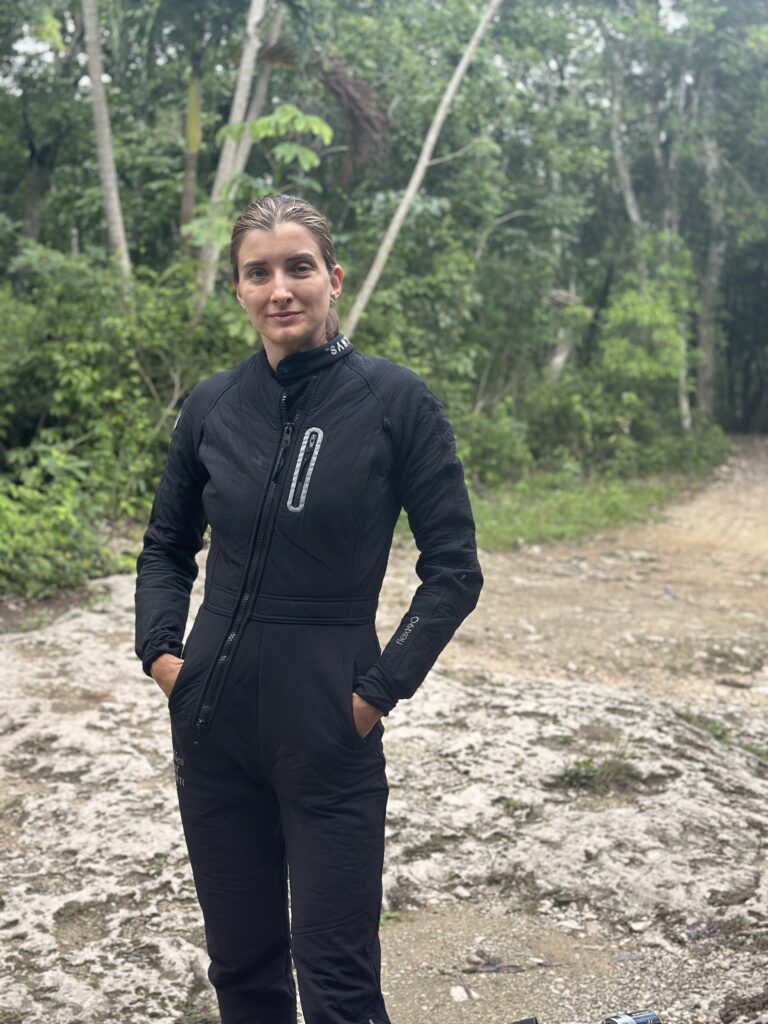I’ve received numerous inquiries about choosing the right undergarments for dry suits, which prompted me to write this article to address the most frequently asked questions. While working on this piece, I connected with many individuals—both users and sellers of undergarments from various parts of the world—who generously shared their experiences and insights. I’d like to extend a special thanks to Sean Becker for contributing valuable thoughts on this topic.
Let’s start with the basics: Why do we need proper undergarments for a dry suit?
A dry suit, by itself, serves as an outer shell that keeps us dry. You can find thinner trilaminated suits, thicker neoprene suits, and others made from various materials, such as nylon, Cordura, and Kevlar, each offering different characteristics in terms of thermal protection, buoyancy, abrasion resistance and durability.
Trilaminate suits feature a three-layer construction with a waterproof membrane, providing excellent breathability and mobility. Neoprene suits, on the other hand, not only keep you dry but also add warmth due to their insulating properties. Nylon and Cordura are often used in the outer layer for their durability and resistance to abrasions, making them ideal for rugged conditions.
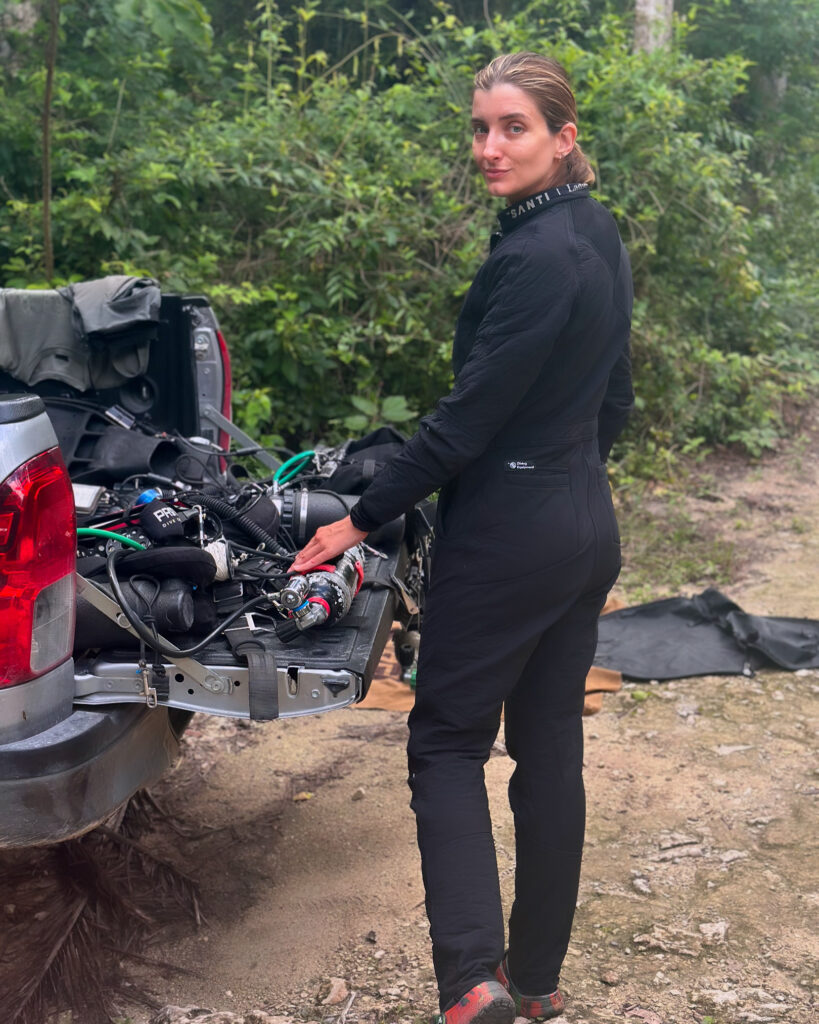
Regardless of the type of suit, you want to wear undergarments essentialy for comfort, insulation, sweat wicking and buoyancy.
Dry suits are designed for the space inside the suit to be filled by different types and thicknesses of undergarments. Even slim custom-made suits, like those with a cave cut, will still generally feel too large without undergarments. The more space there is inside the suit, the harder it can be to control the movement of the gas bubble, especially for novice divers, making buoyancy and trim challenging. This, on the other hand, can be an advantage if the right suit is matched to the right garments.
Wearing only a base layer can feel uncomfortable for most people because, although the suit should compress slightly, without thicker layers it can feel too restrictive. This can press the inlet valve onto our chest leaving marks and squeezes that wearing a thicker undergarment would prevent.
Another common issue relates to trim. You will find more challenging to maintain proper trim if you are overweighted (e.g., wearing just a base layer with heavy equipment). Without undergarments to help balance trim weight, achieving good trim and balance can become significantly harder.
The thickness and number of layers you need will depend on the diving conditions, your personal tolerance to cold, and the duration of your dives. As a general rule, thermal protection should account for roughly 50% more time than your planned dive duration. This is because there’s always the possibility of delays or emergencies that could extend your time in the water. I highly recommend staying warm the entire time—whether it’s waiting for your boat for an extra half-hour or dealing with a delay in a cave.
Only a few things diminish your awareness as quickly as physical discomfort and awareness is essential for safety while diving. Being cold is one of the most significant hindrances. The risk of making critical mistakes increases dramatically when you’re distracted by the cold. This is why it’s crucial to choose your thermal protection wisely.
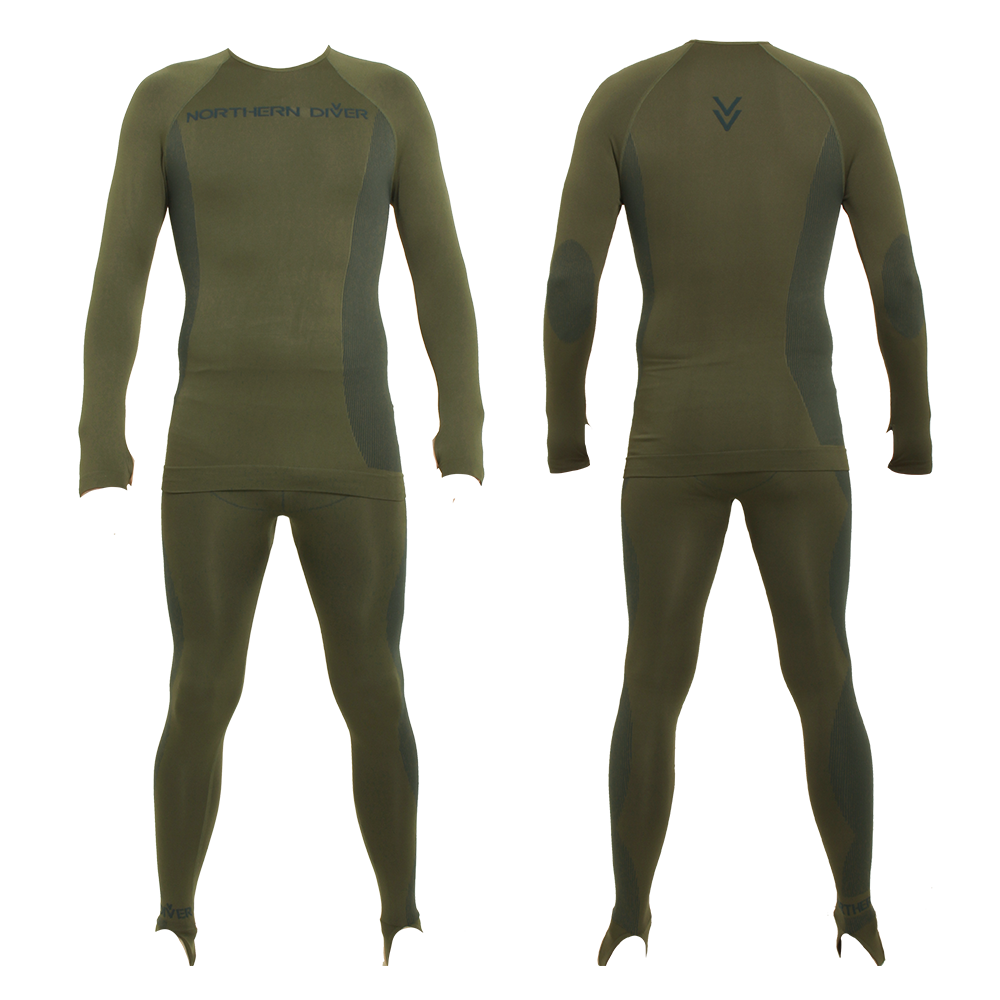
Let’s talk about the base layers for divers.
We use base layers mainly for moisture management and thermal regulation. Using them is essential, while they don’t necessarily need to be warm, they should fit well and feel comfortable. you can find various types of base layers made from different fabrics. Synthetic base layers wick moisture away from the skin and dry quickly, making them popular in activewear due to their breathability. If you’re allergic to wool, like I am, synthetics can be the best option.
You can explore diving-specific brands like 4th Element, or look into brands that produce base layers for running and skiing. For instance, I’ve been using Craft garments for over ten years. They are designed for active sports and runners, and they work well as base layers. Another excellent brand is X-Bionic, which is a bit more high-end but uses innovative technology and offers a great fit.
Many brands also offer blends of synthetic fabrics with natural fibers (like merino wool), combining the best properties of both. Pure merino wool options are available as well. K01 and Santi both offer soft, high-quality ones. Merino wool excels in moisture management, warmth, and comfort. It’s known for keeping you warm even when wet while being naturally moisture-wicking and odor-resistant.
Now, let’s talk about the finer details. When picking a base layer, pay attention to the seams. Flat seams are key—they prevent chafing and make for a much more comfortable experience, especially if you’re layering. The fit is also crucial. It needs to be snug to allow layering without feeling restrictive. And, of course, you’ll want to adjust the thickness of your base layer depending on the diving conditions.
Lastly, make sure to pack more than one base layer! Since they’re in direct contact with your skin, they tend to absorb sweat and moisture. If you don’t have access to a washing machine during your dive trip, having a few extra pairs will keep you fresh, comfortable, and ready for the next dive.
If you’re only wearing a thin base layer and moisture stays trapped inside, you’ll quickly become cold even in relatively warm water. Without thicker layers to absorb that moisture or allow it to evaporate, you essentially end up diving in damp clothes, which is uncomfortable and chilly. Another common issue occurs when you put on your drysuit in warm conditions and start sweating—your base layer gets wet even before you begin the dive, leading to that same rapid cooling. That’s why, in addition to buoyancy considerations, I don’t recommend diving with just a base layer, even in warm water. This is where the mid-layer becomes essential.
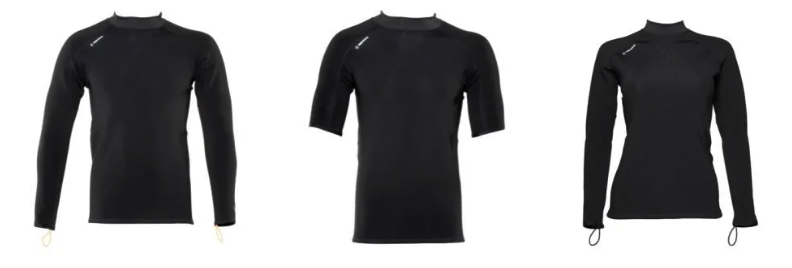
What is the mid-layer and how does it help with thermal protection?
A good mid-layer is designed to retain heat and absorb some of the moisture that passes through the base layer. Think of it as your thermal buffer. Mid-layers often look like fleece long johns or similar garments. For example, DUI offers a fleece overall option, other popular choices include the Fourth Element Xerotherm and Bare Ultra Warmth mid-layers, which are roughly the equivalent of a 100g insulation layer. Usually you use them in warm water conditions, with water temperatures around 24 C or above (depending on the length of the dive).
Fleece-based mid-layers from skiing or outdoor brands also work well. Skiing leggings or fleece long sleeves, while typically thinner than a 100g layer, still do a good job of keeping you warm and dry by wicking away moisture. I use these for shorter dives in super warm water, around 28 C. The key is finding something that strikes a balance between insulation and breathability while also fitting well.
Comfort remains just as important as it does with your base layer. The mid-layer should fit snugly but allow you enough freedom to move easily without feeling restricted. You want to make sure it doesn’t bunch up or limit your flexibility, especially as you’ll need to maintain a full range of motion for diving. Ideally, it should also maintain warmth for some time even when wet, since we all know that dry suits don’t stay 100% dry all of the time. The same stands for the undergarments itself.
What are the best diving undergarments?
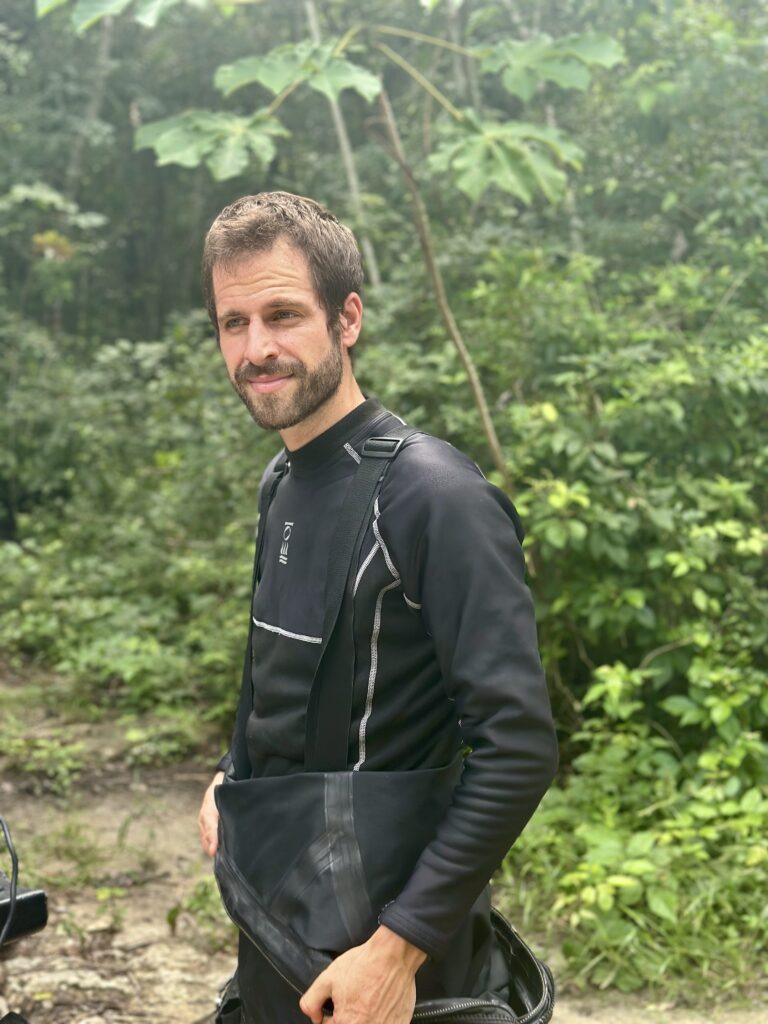
If you’re diving in super warm waters, base and mid-layers might be all you need. However, for longer or colder dives, proper undergarments are essential. These undergarments come in a range of thicknesses, depending on the level of protection required. The most common thicknesses are labeled as 190g, 250g, 300g, 450g, with 450g being the warmest option.
It’s easy to assume that the thickest undersuit is the warmest. However, modern fabric technology, moisture-wicking properties, and strategic focus on key exposed areas make modern undersuits highly effective. They deliver great thermal performance without being bulky or restrictive.
For this essential gear, it’s best to stick with diving-specific brands. Some of the best brands of diving undergarments include 4th Element, Santi, DUI. They are known for their quality and reliability. Many divers choose 4th Element Arctic or similar undergarments for cave diving in Mexico (water temperature here is around 24 C year around). Recently, SEAL also introduced a highly regarded option. Other reputable brands, such as TDS, Bare, Pinnacle and others, offer solid options that could be a bit more budget-friendly.
It’s important to note that thickness numbers alone can be misleading. For example, I once had a 400g Thinsulate undergarment from Scuba Force that felt much colder than my current 190g Santi Flex. And 400 g equivalent ideally should keep you warm in cold waters (below 15 C). This shows that technology matters and insulation performance isn’t always directly proportional to the weight or thickness of the material. To make an informed decision, always consult the recommended temperature charts for the specific model you’re considering. These charts will give you a clearer understanding of how each undergarment performs in various conditions.
Thickness aside, there are more things to consider:
- Size: Very few brands on the market offer made-to-measure undergarments, which is a shame because the fit is just as important as that of your drysuit itself. While spending hours in an unfriendly environment, I value comfort and style, even if no one else can see it. Comfort comes from proper fit, that should allow you to move freely without any restrictions.
To test the fit, try moving in different directions. Can you do lunges? Reach your hands above your head and touch the back of your neck? Hug yourself? If the answer is “yes,” it’s likely a good fit—unless it’s too big. If your undergarment is too large, you’ll still be able to move, but excess fabric can act as a gas trap, making suit management more difficult. It also shouldn’t be as snug as your base layer, but it should fit comfortably without leaving extra space.
- Overall vs. Separate Pieces: It might be easier to find a proper fit with separate pieces, but some divers find that two-piece setups can ride up when donning the suit, leaving exposed areas. Personally, I’ve used a two-piece setup with the 4th Element Arctic top for years and never encountered this issue, so it ultimately comes down to personal preference.
Opting for separate pieces might also be advantageous if you need extra buoyancy in specific areas. For example, you could choose a thinner mid-layer for the bottom and a thicker top. This kind of customization is harder to achieve with an overall, since you can’t adjust the thickness in specific areas. There are also layering pieces, such as fleece vests, that you can add if you need an extra layer of warmth on top or in between other layers.
- Buoyancy Characteristics: While some undergarments provide excellent warmth, they can also be quite fluffy and buoyant. A good example is Weezle, a popular choice for extreme cold waters, but also very fluffy. This added buoyancy may require you to use extra weights to achieve proper trim and balance, so you need to be mindful of this when selecting your undergarments. On the other hand, you can add layers depending on your trim, to balance it out. A common example with divers who have floaty legs and a head down natural trim, is adding a top layer that will make the imbalance more even.
- P-Valve Connection: When using overalls, many suits come with a two-way zipper that allows you to run the P-valve tube through the suit. Some suits have specific cut-outs designed for the tube, but in some cases, the quick disconnect system may not fit through these openings. With separates, the process is often easier, as you have more flexibility in positioning the tube and quick disconnects. However, this is definitely something to consider, as it can impact the overall convenience and comfort during longer dives.
Don’t Forget About Proper Sock Choice for Diving
Choosing the right socks is just as important as selecting the proper base layers and thermal protection and the layering philosophy is the same. Warm, comfortable feet can make a huge difference, especially during long cave or technical dives, where staying warm is essential for safety and comfort.
You have a variety of options when it comes to socks, from diving-specific brands to skiing socks. They should match your thermal layers in terms of thickness. Some people find that keeping their feet extra warm feels better and opt for thicker socks with thinner undergarments. Just make sure that your socks comfortably fit into your drysuit boots without causing any constriction or discomfort.
Diving undergarment care and washing
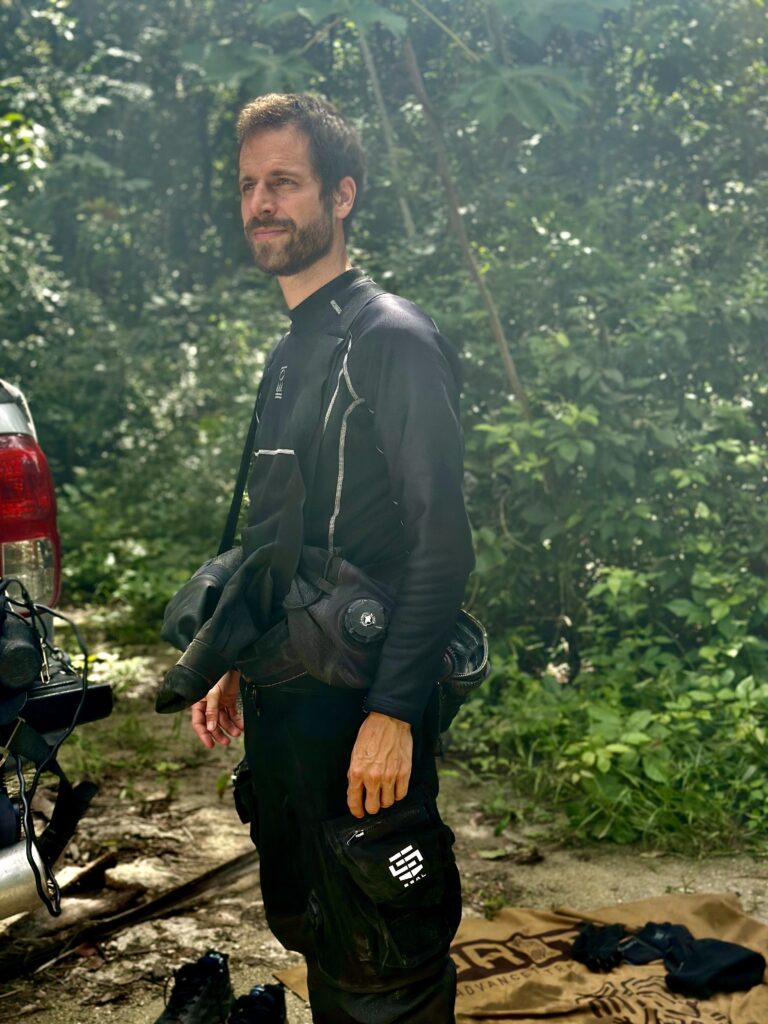
It’s essential to take proper care of your undergarments to ensure they last and continue to perform effectively. Thinsulate, for example, is sensitive to washing, as frequent washing can significantly reduce its lifespan. To preserve its insulating properties, it’s best to avoid regular washes whenever possible.
For other materials, you can generally wash them in a washing machine on a delicate cycle using cold water. Always follow the care instructions on the label to prevent any damage or premature wear. Taking the time to properly care for your undergarments will help maintain their performance, comfort, and longevity. This will allow you to dive confidently and comfortably for many trips to come.

